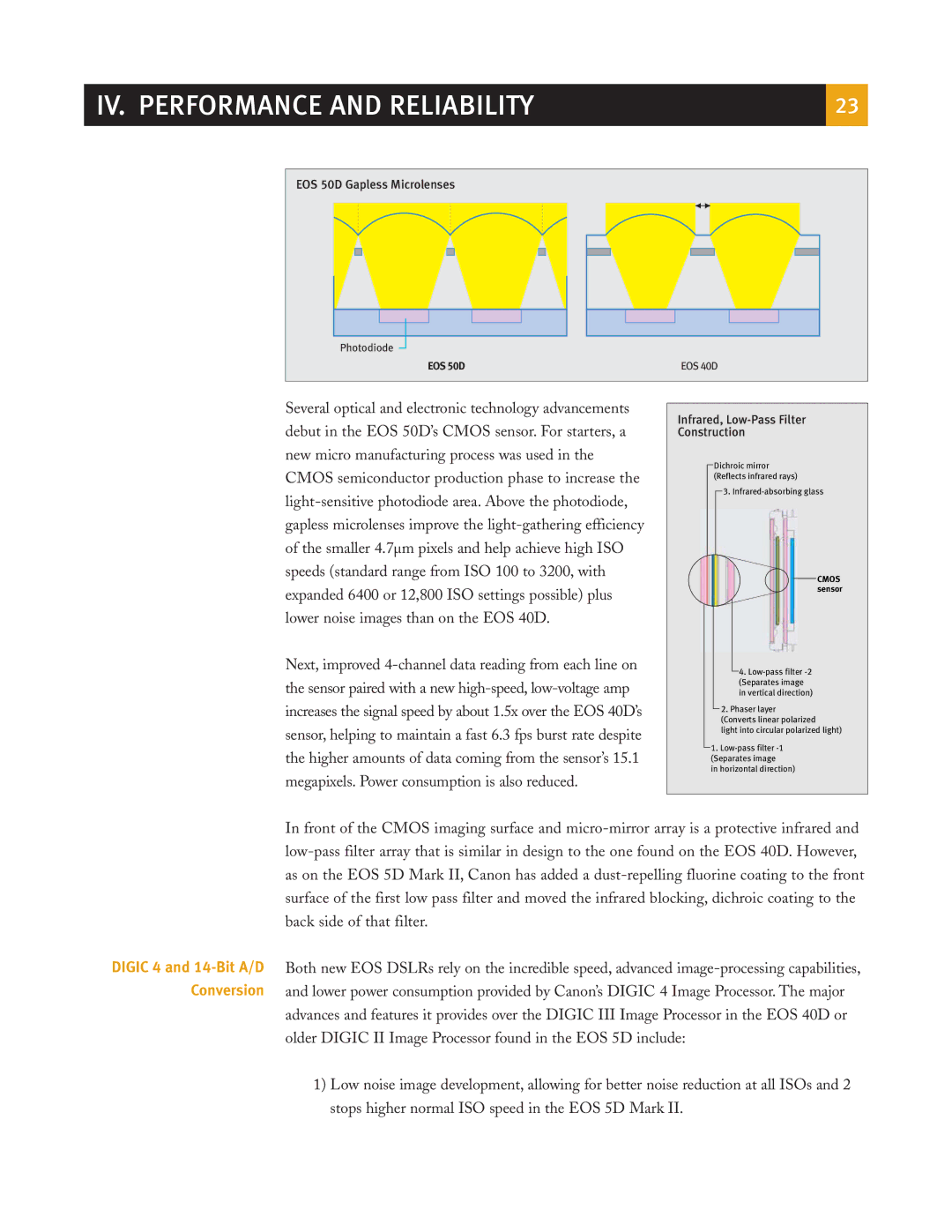IV. PERFORMANCE AND RELIABILITY | 23 |
| |
EOS 50D Gapless Microlenses | |
Photodiode | |
EOS 50D | EOS 40D |
Several optical and electronic technology advancements debut in the EOS 50D’s CMOS sensor. For starters, a new micro manufacturing process was used in the CMOS semiconductor production phase to increase the light-sensitive photodiode area. Above the photodiode, gapless microlenses improve the light-gathering efficiency of the smaller 4.7µm pixels and help achieve high ISO speeds (standard range from ISO 100 to 3200, with expanded 6400 or 12,800 ISO settings possible) plus lower noise images than on the EOS 40D.
Next, improved 4-channel data reading from each line on the sensor paired with a new high-speed, low-voltage amp increases the signal speed by about 1.5x over the EOS 40D’s sensor, helping to maintain a fast 6.3 fps burst rate despite the higher amounts of data coming from the sensor’s 15.1 megapixels. Power consumption is also reduced.
Infrared, Low-Pass Filter Construction
Dichroic mirror (Reflects infrared rays)
3. Infrared-absorbing glass
CMOS sensor
4.Low-pass filter -2 (Separates image in vertical direction)
2.Phaser layer
(Converts linear polarized
light into circular polarized light)
1.Low-pass filter -1 (Separates image
in horizontal direction)
DIGIC 4 and 14-Bit A/D
Conversion
In front of the CMOS imaging surface and micro-mirror array is a protective infrared and low-pass filter array that is similar in design to the one found on the EOS 40D. However, as on the EOS 5D Mark II, Canon has added a dust-repelling fluorine coating to the front surface of the first low pass filter and moved the infrared blocking, dichroic coating to the back side of that filter.
Both new EOS DSLRs rely on the incredible speed, advanced image-processing capabilities, and lower power consumption provided by Canon’s DIGIC 4 Image Processor. The major advances and features it provides over the DIGIC III Image Processor in the EOS 40D or older DIGIC II Image Processor found in the EOS 5D include:
1)Low noise image development, allowing for better noise reduction at all ISOs and 2 stops higher normal ISO speed in the EOS 5D Mark II.

